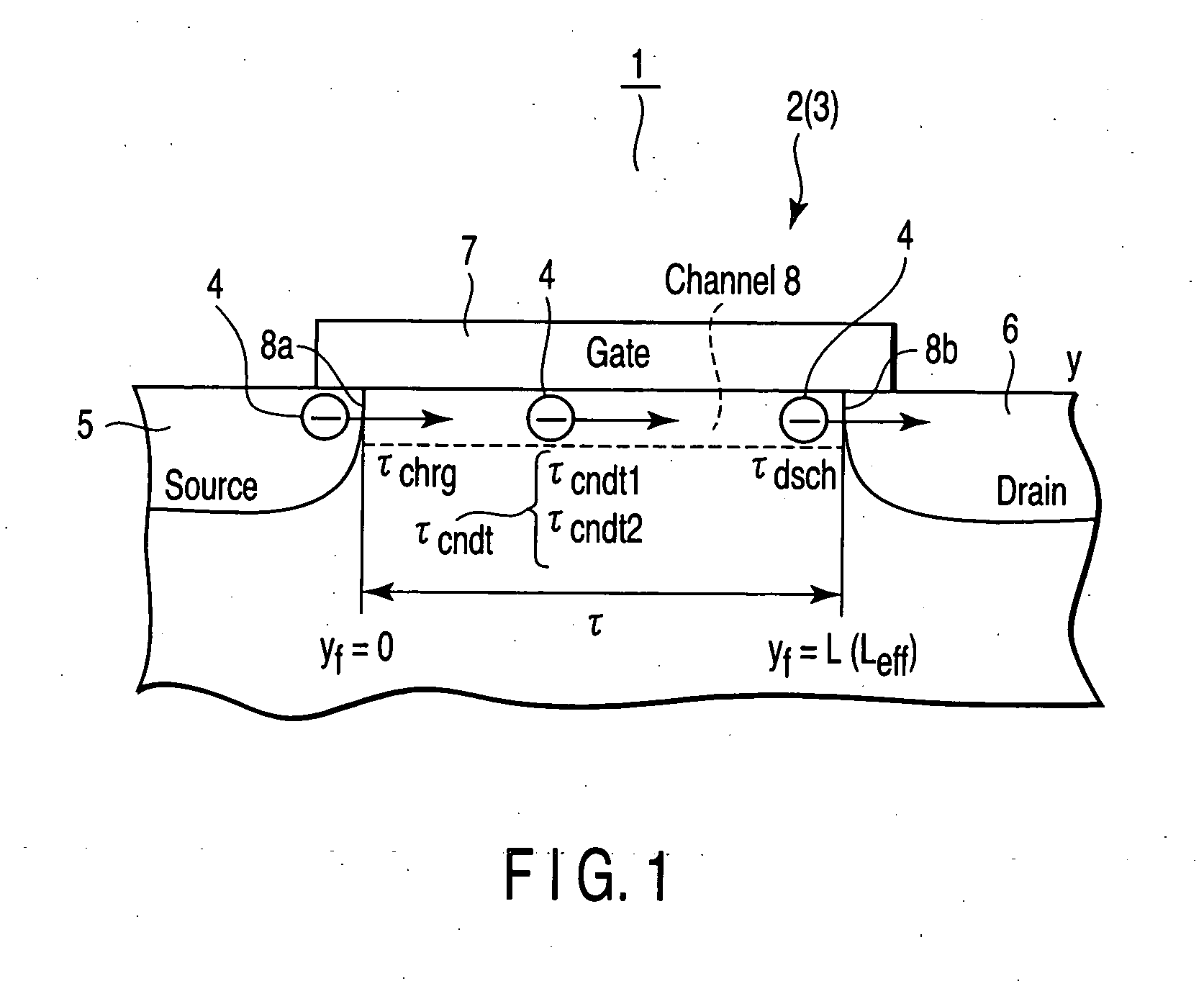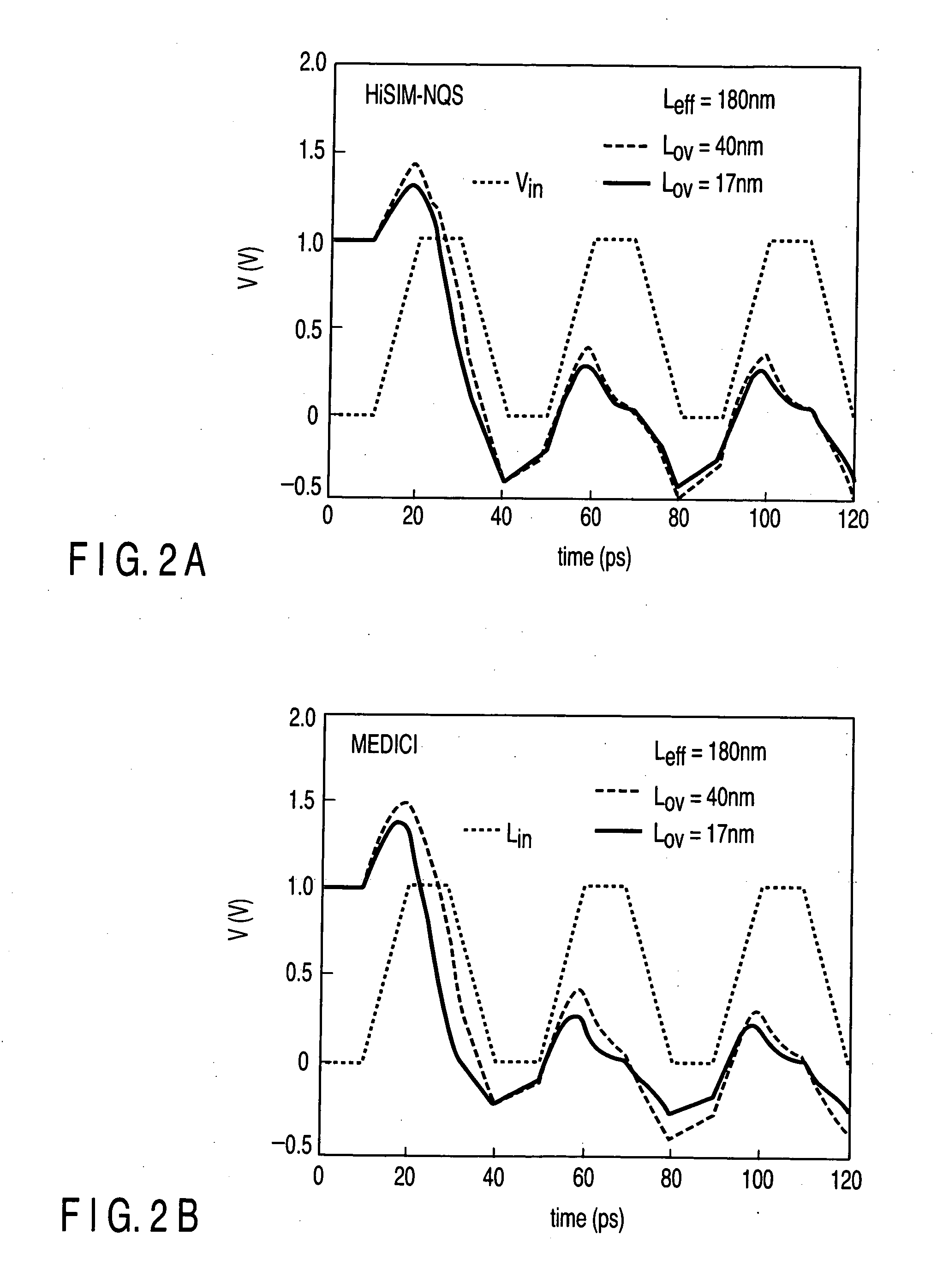Simulation model for designing semiconductor devices, apparatus for simulating the designing of semiconductor devices, method of simulating the designing of semiconductor devices, computer-readable recording medium storing a program for simulating the designing of semiconductor devices, semiconductor device, and method of manufacturing the semiconductor device
a simulation model and semiconductor technology, applied in the direction of individual semiconductor device testing, semiconductor/solid-state device testing/measurement, instruments, etc., can solve the problems of difficult to predict or reproduce the behavior of the carrier, difficult to converge the device, and not practicably obtained in most models, so as to improve the analysis precision of the behavior, predict or reproduce the operation of the semiconductor element quickly, and improve the effect of the simulation model
- Summary
- Abstract
- Description
- Claims
- Application Information
AI Technical Summary
Benefits of technology
Problems solved by technology
Method used
Image
Examples
first embodiment
[0208] First, a first embodiment according to the present invention will be described with reference to FIGS. 1 to 6. FIG. 1 is a diagram schematically showing origin of an NQS effect of a simulation model for designing a semiconductor device according to the present embodiment. FIGS. 2A and 2B are graphs showing simulation results of voltage applications in the simulation model and a two-dimensional device simulation apparatus according to the present embodiment. FIG. 3 is a graph showing simulation results of displacement currents in the simulation model and the two-dimensional device simulation apparatus according to the present embodiment. FIG. 4 is a graph showing simulation results of transient drain currents in the simulation model and the two-dimensional device simulation apparatus according to the present embodiment. FIG. 5 is a graph showing a function of each delay model in transient carrier transport in the simulation model according to the present embodiment. FIG. 6 is ...
second embodiment
[0236] Next, a second embodiment according to the present invention will be described with reference to FIGS. 7 to 22.
[0237]FIG. 7 is a graph showing velocities of carriers in lateral directions in the transient state and quasi-static approximation at a high-speed switch-on time. FIG. 8 is a graph showing carrier concentrations in the transient state and quasi-static approximation on the side of the source of the MOSFET having a design rule of 0.5 μm. FIGS. 9A, 9B, 9C, and 9D are graphs showing charging delays of the carriers at a plurality of different rising times, and carrier velocity distributions in the transient state and quasi-static approximation at the plurality of different rising times. FIG. 10 is a graph showing a case where effects of the carrier charging delays are included and a case where the effects are not included in a simulation model according to the present embodiment. FIG. 11 is a diagram schematically showing analysis in a quasi-static state of a delay mecha...
third embodiment
[0275] Next, a third embodiment according to the present invention will be described with reference to FIGS. 23 to 30. FIG. 23 is a graph showing a relation between each of passing delay, charging delay, and two types of conductive delays which are delay models according to the present embodiment, and voltages. FIG. 24 is a graph showing calculation results of each carrier running time according to the present embodiment. FIG. 25 is a graph showing calculation results of each transient carrier density by the simulation model according to the present embodiment. FIG. 26 is a graph showing calculation results of conduction currents by the simulation model according to the present embodiment and two-dimensional device simulation. FIG. 27 is a graph showing calculation results of displacement currents by the simulation model according to the present embodiment and the two-dimensional device simulation. FIG. 28 is a graph showing dependence of the displacement current on the charging del...
PUM
 Login to View More
Login to View More Abstract
Description
Claims
Application Information
 Login to View More
Login to View More - R&D
- Intellectual Property
- Life Sciences
- Materials
- Tech Scout
- Unparalleled Data Quality
- Higher Quality Content
- 60% Fewer Hallucinations
Browse by: Latest US Patents, China's latest patents, Technical Efficacy Thesaurus, Application Domain, Technology Topic, Popular Technical Reports.
© 2025 PatSnap. All rights reserved.Legal|Privacy policy|Modern Slavery Act Transparency Statement|Sitemap|About US| Contact US: help@patsnap.com



